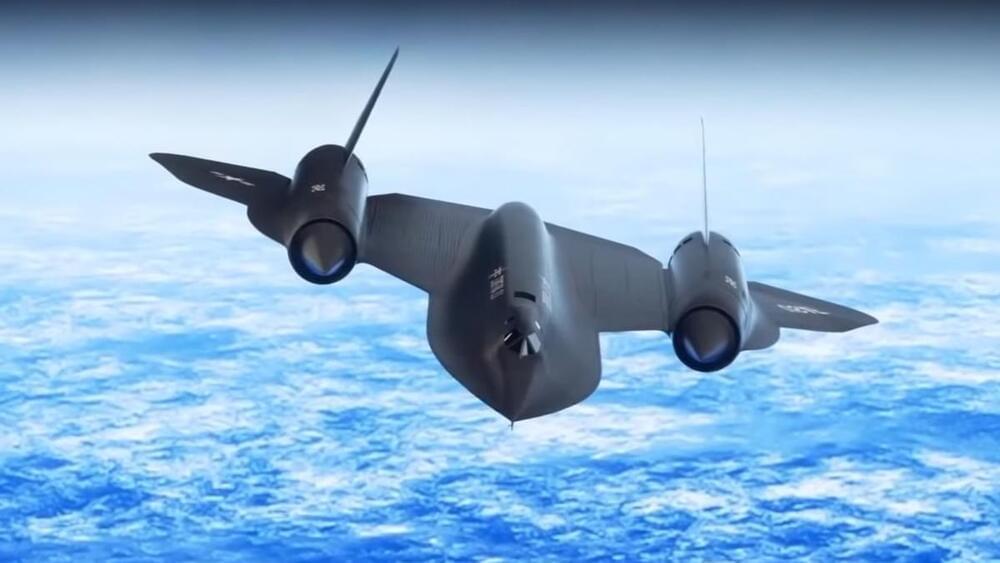We humans are obsessed with speed. We bred the fastest horse when we first started riding. We looked for ways to put insanely powerful engines in our cars when we first started building them.


Researchers at Kyoto University have joined forces with contractor Kajima Corp. to develop gravity-defying habitats required for use on the Moon and Mars, complete with their own transportation system.
The researcher’s ambitious idea also comes with a space train that is set to function like trains on Earth while at the same time generating artificial gravity.
#SpaceHabitat #Space #Gravity #SpaceTravel #SpaceTrain
He has never been on a leash and eats only human food.
Bobi, aged 30 years and 268 days, was crowned as the world’s oldest living dog by the Guinness World Records last week. Bobi also holds the enviable record of being officially the oldest dog to have lived on the planet.
A peaceful existence that would not have been.
Guinness World Records.
It was only two weeks ago that Spike, a 23-year-old chihuahua mix from Ohio, was named the oldest living dog. Spike’s story was quite emotional as he was founded abandoned as a 10-year-old dog in the parking lot of a grocery store. His current owner, Rita Kimball, decided to take him home, and he shot to fame after receiving Guinness recognition.

Marking an end to an era, Microsoft is no longer directly selling Windows 10 product keys on their website, instead redirecting users to Windows 11 product pages.
This month, Microsoft began displaying an alert on their Windows 10 Home and Pro product pages, warning customers that January 31st would be the last day to purchase a license.
“January 31, 2023 will be the last day this Windows 10 download is offered for sale,” the company says in an alert posted to its website.

I have said 3D printed houses could help with the housing crisis.
“Project Milestone serves as the world’s first 3D printed concrete “commercial housing project,” according to its maker.”
But not according to ICON 3D, and the link below shows Africa’s largest 3D printing housing project in Kenya. I have been talking about 3D printed houses for years. Its good people have caught up.
I also would like to connect with covid in the link below. Check them out as well.

I have said 3D printed houses could help with the housing crisis.
“Project Milestone serves as the world’s first 3D printed concrete “commercial housing project,” according to its maker.”
But not according to ICON 3D, and the link below shows Africa’s largest 3D printing housing project in Kenya. I have been talking about 3D printed houses for years. Its good people have caught up.
I also would like to connect with covid in the link below. Check them out as well.
‚400 a month— see what it’s like to live in” | >
Technology has already changed our world. I mean, who knew that we’d be able to flick a switch to illuminate the darkness rather than lighting a candle? It’s wild. But the technology we have today and will have in the future is absolutely insane. From 3D printing houses to robotics to help us in our jobs, here are 20 emerging technologies that will change our world.
► For copyright matters please contact us: [email protected]

However, some journals allow researchers to use AI to improve the readability and language of the research.
ChatGPT, the conversational chatbot from OpenAI might have authored many poems, essays, and even pieces of code so far but is unlikely to get author credit for a peer-reviewed paper anytime soon.
Major science publishing houses like Springer Nature and Elsevier have specified that they will not consider ChatGPT as an author in their publications, The Guardian reported on Thursday.
While many have claimed to fix politics, very few even came close. Centuries have come and gone with their empires and ideals. Despite the many attempts to reform and improve the political landscape, the issues at hand remain largely unchanged. Corruption, inequality, and moral decay continue to plague governments around the world. It is clear that simply implementing new systems or electing the same leaders is not enough to address these longstanding issues. To truly reform and reverse the decay we see will need more. It will take a multifaceted approach that involves both systemic changes and individual actions, and some radical new ideas.
Many people find themselves today in countries that are repeating history. Inflation that only taxes the working class. Scandals from politicians that care not for the country nor the people they claim to represent. Lies of taxing the wealthy while continuing to burden all others with the shackles of debt. Fear and alarm echoed through every channel of state media that does nothing but leave the public despondent and hopeless about their future. Constant pandering and pilfering by people who see the nation they reside in as nothing but a sinking ship to be looted and left.
Fixing political systems has been a problem prominent in my mind for a long time. With the current order and systems of governance collapsing globally many have begun to ponder this as well. Unfortunately for the simple-minded, I foresee the rise of autocracy, be it communism, socialism, republicanism, or fascism. Such a thing cannot be averted and in fact, many people I doubt would even want it to be. The world has cried out far too long for order, and sooner or later every society will heed that call. Proof enough of this observation would be the nationalist movements that have gained widespread traction in 2022. While I won’t name them such parties and movements have spawned in virtually every western nation. The reason for this is painfully simple: democracy has failed in many people’s lives. It has failed to increase wages or lower housing costs, or even provide reasonable public services.

The largest moon of Saturn is an unique habitat in our Solar System. It appears to be a world different from our own, with its methane-filled lakes, freezing volcanoes, and underground tunnels.
However, Titan’s first geomorphological map demonstrates that, while its landscape is spectacular and diverse, these elements actually make it surprisingly similar to Earth.
Through a $57 million contract with NASA, ICON, a company out of Austin, is working to do just that. ICON wants to put a broad spectrum of infrastructure on the moon, which isn’t the easiest place to build.
“First of all, you need to be able to protect the astronauts from the lunar environment which is really a nasty place to live and work. Vacuumed environment, extreme temperature swings, radiation environment, micro-meteoroids, dust protection,” Clinton said. “To produce things like landing pads and roads and blast shields and shelters and habitats.”
Clinton says ICON will now work to build a 3D printing robotic arm that will be sent to the moon to do the construction but can be controlled from Earth.